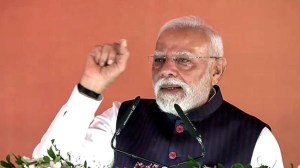Nepal finally chooses a president
Ram Baran Yadav, a physician turned politician, has become the president of the world’s youngest democracy.

Ram Baran Yadav, a physician turned politician, has become the president of the world’s youngest democracy. He humbled Ramraja Prasad Singh, a maverick and believer in the politics of violence, as pro-democracy forces from backgrounds united against the Maoist-backed candidate. This was a temporary, issue-specific alliance between political parties against the Maoists who asserted that president and prime minister must belong to the same group. Others who thought it would lead to neo-authoritarian Maoist control of all power centres, can now breathe easier.
Yadav’s victory over Singh will have much larger political and ideological significance too. He has, all, along been a votary of politics of conciliation, a moderate and disciplined voice in the Nepali Congress as he indicated that if possible, the monarchy should be retained within the constitutional framework — without power, but so as to contribute to national unity and integrity. He has also cautioned that a shift to radical federalism from a unitary system of governance should in no way create regional disharmony, and that a well thought-out consensus should decide the model of devolution of power.
In contrast, Singh was perceived as a supporter of the Maoist line that about a dozen states within federal Nepal should be created along ethnic lines, each named after dominant ethnic groups (castes). It may not be an outright rejection of the Maoist idea, but it is clearly a warning that they will no more be able to dictate their agenda and its adoption, like they did while abolishing the monarchy in May without any debate in the constituent assembly.
However, this is also an alliance of three main parties — the Nepali Congress, the Communist Party of Nepal-Unified Marxist Leninist (CPN-UML) and the Madheshi Janadhikar Forum (MJF) — against the Maoists’ dictation of other parties’ affairs. Initially, Maoists stated that they would accept a president from Nepali Congress, or the UML, but later forbadethe two parties from fielding their leaders, G P Koirala and Madhav Nepal as presidential candidates. Privately, Maoist leaders also criticised India for having tried to influence the party in favour of one of the two leaders. But the voting trends indicated otherwise.
Pro-India parties like Terai Madhesh Loktantrik Party and the Sadhbhavana Party voted for Singh. Yadav has never been a high profile politician but he has all along been advising India that it should not be trying to create a buffer (Terai) within the buffer, and that any such attempt will provoke China to extend its presence. Yadav’s elevation as Nepal’s head of the state has already brought Terai to the centre stage of the country’s politics, but given the values he has championed all along; his election is also a message that Nepal’s politics must be isolated from interference, from the South and North. And Maoists agree with that. Their changed line is that nationalism and national interest issues demand unity. No one knows how large a part anti-Indianism plays in that brand of Nepali nationalism.
The Maoists, despite being the single largest party in the constituent assembly, have stated that they will not form the government if their candidate lost the presidential race, which has now happened. But they are constitutionally obliged to form a government. The only lesson they can draw from this defeat is that running a government will be a tightrope walk, and that other parties will extend their support on a case-to-case basis. After all, Maoists themselves have been asserting their mandate to form the government. But their defeat in the presidential poll can be chalked up to the miscalculation of their influence over the decisions of other parties, mainly the Congress and the UML, and their attempt to play one against another.
However, this situation has emerged as an opportunity for the Maoists to learn to govern in a conciliatory manner. A democrat and nationalist could be the only appropriate guardian of the nation, as it embarks on the process of drafting its new constitution.
ghimire.yubaraj@gmail.com





- 01
- 02
- 03
- 04
- 05


























